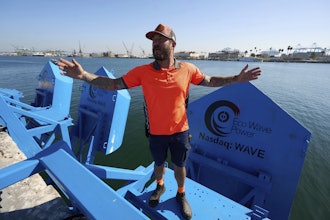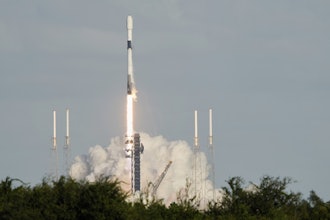Nissan Debuts Autonomous, Electric Crossover
At the Tokyo Motor Show, Nissan displayed a concept electric autonomous crossover that has a pair of motors, a large battery built into the floor, 429 horsepower and 700 Nm of torque. The company calls it the IMx, and it has a range of 373 miles per charge.
According to the company, the IMx can be wirelessly charged and it includes a future iteration of Nissan's ProPILOT assisted-driving technology. ProPILOT uses a combination of radar, a camera and sensors to read lane markings.
Right now, the ProPILOT can handle the highway or stop-and-go traffic, but you can't yet lean back and enjoy a good book — it actually has trouble reading lanes in less than ideal conditions. A current version of the ProPILOT will hit the streets when Nissan's 2018 Rogue is released in October 2017.
According to an article from Mashable, the company stated that the IMx could even connect to local power grids to push electricity onto the network.
MIT Strengthens Concrete with Recycled Plastic Bottles
Engineers continue to look for ways to not only make concrete stronger, but to lower the environmental impact of concrete production. The industry is one of the largest producers of man-made CO2 emissions in the world.
Researchers from the University of British Columbia are adding polymer fibers to make the concrete earthquake proof, but they're also replacing up to 70 percent of the cement with coal ash. Engineers from the same university are also using shredded recycled tires to make a stronger mix and also limit the number of tires in landfills — it's apparently a very environmentally friendly university.
Not to be outdone, MIT students have found yet another way to kill two polluting birds with one stone by taking old plastic bottles and using it to make a stronger, more flexible concrete.
The students aren't exactly tossing shredded bottles into the hoppers and calling it a day. Their process exposes small plastic flakes to low doses of gamma radiation, and then pulverizes them in to a fine powder that is mixed in with the cement. According to the researchers, the new concrete is up to 20 percent stronger than conventional materials.
The team is only replacing 1.5 percent of the concrete with irradiated plastic, but their new mix is not only stronger, but it could have an immediate impact on global carbon dioxide emissions.
The researchers are now working with different plastics to see how they impact concrete's structural properties.
Yamaha Designs Motorcycle-Racing Robot
Also at the Tokyo Motor Show, Yamaha unveiled what it calling a Leaning Multi-Wheeler. The Niken Multi-Wheeler runs off of a liquid-cooled, in-line three-cylinder engine, and it's designed to give drivers more stability when taking corners.
The body has two 15-inch front wheels and a new front-end suspension. Details are limited, but Yamaha promises more details will come live on the company's Facebook page on November 6th.
The Niken wasn't the only vehicle making its debut at the show. Yamaha also introduced:
- The Tritown, essentially a scooter/Segway hybrid that uses the same Leaning Multi-Wheel technology.
- The MOTOROiD, a battery powered proof-of-concept that uses artificial intelligence to recognize its owner.
- The MOTOBOT Ver.2, the second generation of an autonomous motorcycle-riding robot. MOTOBOT is already riding stock motorcycles around test tracks at more than 120 mph, and it even raced MotoGP star Valentino Rossi, although Rossi did come out on top.
This is Engineering By Design with David Mantey.






















